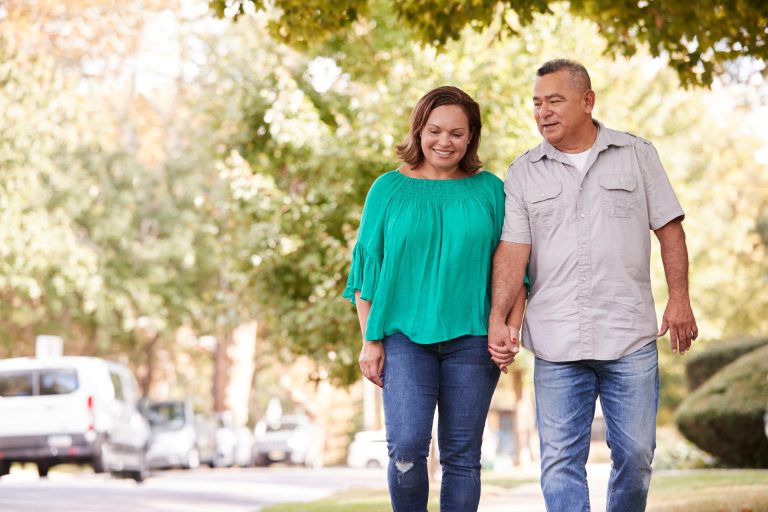
This blog has been adapted from a blog post published by MyLifeSite.net, By Brad Breeding| May 18th, 2020
I often mention the AARP statistic that roughly 85 percent of people age 65 and older say they want to remain in their current home as they grow older. There are several reasons commonly cited for wanting to “age in place”: a belief that staying in the home will be the most economical option; a preference to remain surrounded by longtime neighbors and familiar nearby businesses; a hope to retain a sense of independence; and a desire to avoid the hassle of a move.
I understand the allure of each of these factors. And for some seniors, remaining in their existing home works out exactly as they imagined it would. But for other people, the realities of so-called “aging in place” are not all they had hoped.
For example, what happens if a health issue arises? The cost of caring for a person in their home can get expensive very quickly. What if beloved neighbors move or pass away? Loneliness is a common issue for those who remain in their home, especially if and when a spouse, partner, or long-time friends die. And as for wanting to avoid the hassle of moving, well, eventually, someone will have to pack up or sell off the household’s contents.
But right now, there’s another senior living consideration that people have not had to think of for quite some time: the pros and cons of remaining in the home versus living in a retirement community when there is a pandemic.
A challenging situation for seniors
These are uncharted waters, for sure, and the COVID-19 pandemic has exposed a number of issues related to both aging in place and living in a multi-unit senior living community, such as a continuing care retirement community (CCRC). In last week’s blog post, I shared some of the concerns surrounding each option.
For example, for those who are in a CCRC or other retirement community, there are understandably worries about vulnerable residents contracting COVID-19 and how rapidly the virus can spread in a group setting such as assisted living or a skilled nursing care unit. While the senior living industry is, in theory at least, well-prepared to deal with highly contagious illnesses like the seasonal flu and stomach viruses, we have seen a breakdown in protocols in a few nursing homes, resulting in COVID-19 infections and even deaths.
Even those living in an independent living setting of a retirement community are not immune to the impacts of this pandemic. In many cases, these residents have been put into self-isolation, with visitors and travel outside of the community prohibited. In CCRCs, independent-living residents’ meals are delivered to their doorstep with no contact, and group activities have been cancelled. It is understandable if some residents are feeling uneasy and a little stir-crazy. (Those of us living outside of a retirement community are too!)
But for those seniors who are living in their existing home right now, there are other worries during this COVID-19 pandemic. First and foremost, many of those seniors, especially those who live alone, are experiencing a deep sense of loneliness during this period of lockdown. While I hope that neighbors and loved ones are checking in on these seniors, I know that that may not always be the case.
Another big challenge for those seniors who are living in their own home right now is of a more tangible nature. Tasks like shopping and seeking medical care can be a frightening proposition for older people, who have been shown to be especially susceptible to severe and even deadly cases of COVID-19. Putting off healthcare, however, can cause a whole different set of issues, either in the present or future.
So, what is the solution? Is it better to be living in a retirement community or living in your own home right now? Well, I’m not sure there is a perfect answer given the uncertainty of the world we live in. But one hybrid senior living model may offer some of the benefits of both settings: continuing care at home.
Care with all the comforts of home
Sometimes referred to as “a CCRC without walls,” the continuing care at home (CCaH) model merges the comfortable familiarity of staying in your existing home with the peace of mind, any necessary assistance, and healthcare-related services traditionally provided on-site by a continuing care retirement community.
A key distinction of the CCaH concept is that the requirement to buy or rent a residence on the CCRC’s physical campus is typically eliminated. Instead, caregivers (aides, nurses, physical therapists, etc.) from the CCRC travel to the senior’s own home. CCRCs that have implemented continuing care at home programs have in essence extended the reach of their services far beyond the traditional footprint of their facility.
As for the CCaH contract, terms will vary, but they typically include a one-time upfront “entrance fee” ranging from $20,000 to around $70,000 as well as a monthly service fee from around $250 to $800. In many ways, it’s set up much like a typical lifecare-model CCRC contract.
With a CCaH contract, you are essentially a “member” of the CCRC who lives off-campus. However, the total cost of CCaH is usually lower than moving to the CCRC’s campus, especially for people who own their own home outright.
In order to qualify for CCaH, members typically must pass an even more stringent health screening process than is required to move into the CCRC. Often, CCaH members must currently be living independently, in overall good health, and with no signs of cognitive decline.
While the goal of the CCaH concept is to keep seniors healthy and living independently for a long as possible (the same objective applied to residents of the CCRC’s campus), these stringent program health requirements are necessary in order to keep the CCRC financially solvent. Proper actuarial assumptions and reserves are crucial because the cost of providing CCaH care can still be expensive for the organization but the CCRC is getting less in fees.
The many benefits of continuing care at home
Depending on the specifics of the CCaH agreement and the CCRC provider, a variety of services are available to members in the comfort of their own home, guaranteed, if and when they are needed, such as:
- Annual physicals and wellness programs
- Transportation
- Care coordination
- Home inspections
- Companion or live-in care
- Home care or home healthcare
- Senior Rehabilitative care and physical therapy
- An emergency response system
- Adult daycare
- Meals
- Assisted living and nursing home care
Oftentimes, CCaH contracts will even offer members access to the CCRC’s on-campus activities and amenities such as continuing education classes, entertainment outings, or the gym and swimming pool. This provides CCaH members with socialization opportunities to stay active, engaged, and stave off isolation.
As the CCaH business model increases in popularity, CCRCs are identifying new ways to make this option even more attractive to seniors who hope to remain in their current home. For example, some CCRCs give CCaH members the option to spread out payments for their entrance fee over the first five years of their membership. Others permit CCaH members to select contract terms with various daily or lifetime cost limits for the amount of care they will receive, which can make the price of the monthly fee more manageable for some people.
Finding the senior living middle ground
There are various pros and cons to any senior living option, some of which have been spotlighted by the COVID-19 pandemic. And it’s worth considering all of your options with a decision this big, analyzing each one objectively. But regardless of the sometimes-conflicting data points, a top factor when choosing where you will live as you grow older should always be where you think you will be happiest.
For some people, moving to a retirement community such as a CCRC simply isn’t appealing, whether it be because of financial or psychological reasons…or both. For others, a CCRC may be ideal, but perhaps they’re just not quite ready to make that move. Or maybe the cost of moving into a CCRC is prohibitive. For those seniors, a continuing care at home program may provide the best of both worlds.
Although a move to a higher level of care may eventually be necessary, CCaH potentially allows seniors to avoid having to relocate if their care needs can be effectively managed in their own home. Many seniors love the flexibility offered by the CCaH model, providing the ideal balance between cost, peace of mind, and if needed, assistance, while allowing members to stay in the home they love.
For more information about Fellowship Freedom Plans and how this at home model can help you, please call 908-580-3850.




